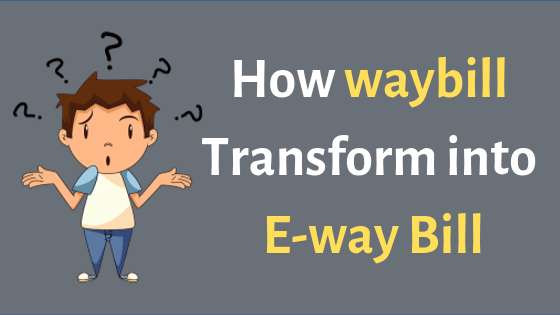A Journey from Way Bill to E-Way Bill

Index Of The Blog
The journey from Way Bill to E-Way Bill
What is Waybill?
The Way Bill is a handwritten document issued by the carrier reading details related to the shipment of the goods. It is similar to that of a receipt that contains the details of the provider as well as the receiver and also the initial and the ending location of the goods. Journey from Way Bill to E-Way Bill.
What is an E-Way Bill?
E-Way Bill is an electronic Way Bill which is not handwritten. It is generated from the E-Way Bill electronic portal (https://ewaybill.nic.in/).
Difference between Way Bill and E-Way Bill?
The main difference between the two is Way Bill is handwritten and the E-ways bill is electronically generated.
The Journey
Just like any other implementations, the government came across many challenges while maintaining the system but they didn’t give up and hence E-Way Bill is finally successful in India. Let’s learn about the journey.
E-Way Bill was used by the Indian citizens even before GST came into existence. This was previously known as Waybill. It was implemented in certain States way back from the implementation of service tax and value-added tax. Journey from Way Bill to E-Way Bill.
What did the experts say?
As per the experts, earlier before Obtaining GST Registration Online under GST, the Way Bill was issued by VAT authorities in the form of a booklet for all the registered taxpayers. The Way Bill booklets resulted in harassment, difficulties as well as corruption.
To control this corruption, GST was introduced a new system in states like Karnataka and Andhra Pradesh started computerizing their ongoing system and that’s how electronic Way Bill came into existence.
Was E-Way Bill introduced for a safer system?
The government wanted to introduce a much safer and secure system like E-Way Bill all over the nation to allow seamless movement of goods from one state to another and also to bring uniformity across the nation to make it one big market. E-Way Bill made sure to keep a check on uncontrolled tax evasion which helped in an increment of revenue by up to 20%.
What were the challenges?
The government made E-Way Bills for inter-state transfer of goods mandatory if goods value above 50,000 from first Feb due to the decrease in GST collection in the month of October to December 2017. However, on the final day, all the bottles and the system stopped due to overload. Journey from Way Bill to E-Way Bill.
However, the government did not lose hope and handled the situation wisely and hence came up with another official portal on April 1st to reintroduce E-Way Bill in the system. The main problem was the technical glitches. The system cannot handle the overload because on the first round 2 lakh people and 60,000 E-Way Bills were regenerated and 15 lakh bills generated on the second day. And now with a stable portal, the system has 20,000 registered transporters and approximately 12,00,000 taxpayers in total.
Also Read: Business Loan for Chartered Accountants
Conclusion of implementing E-Way Bills
With the successful implementation, there are no more long queues and waiting around the state borders just like the paper bill era did to pay local taxes. The transporter’s life has been much easier due to the technology-driven system and has also helped the tax official to efficiently keep a track on the goods. Journey from Way Bill to E-Way Bill.
Even after is challenges the government was successful in establishing the E-Way Bills for the improvement of the citizens.
Also Read: Best Accounting Software













